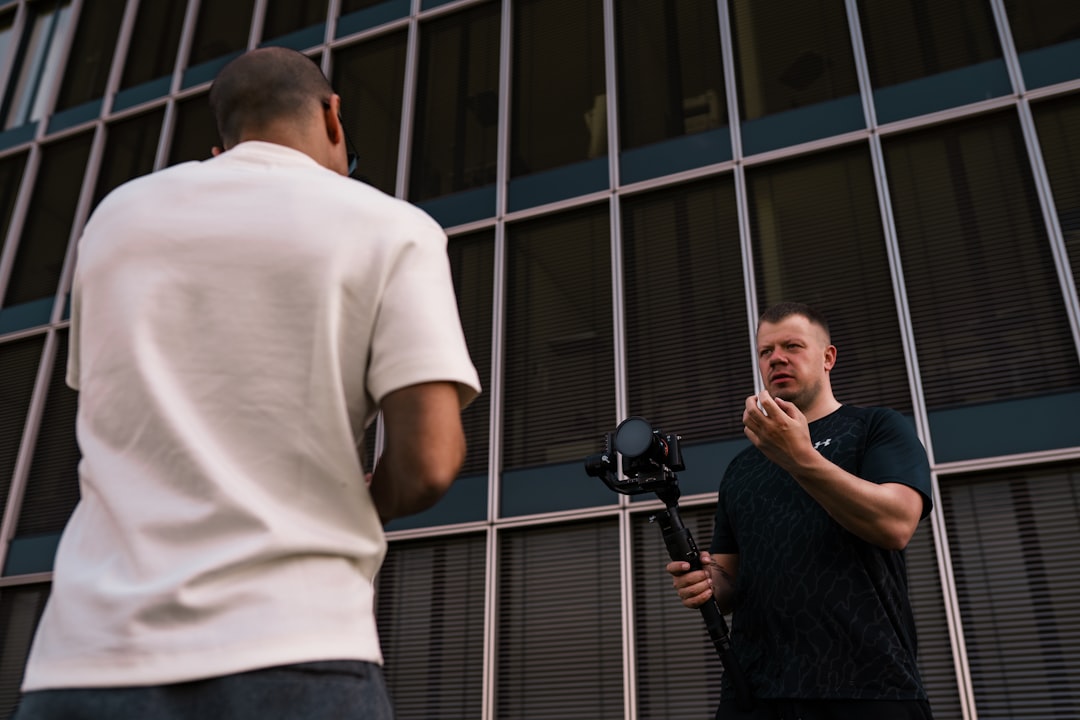
In the ever-evolving landscape of marketing, I find myself increasingly drawn to the concept of micro-storytelling. This approach, which distills narratives into bite-sized, impactful snippets, has emerged as a powerful tool for brands seeking to connect with their audiences on a deeper level. Micro-storytelling allows marketers to convey complex ideas and emotions in a concise manner, making it easier for consumers to engage with the content.
As attention spans dwindle in our fast-paced digital world, I believe that the ability to tell a compelling story in just a few sentences or images is not just an advantage; it’s essential. The beauty of micro-storytelling lies in its versatility. It can be employed across various platforms, from social media posts to email campaigns, and even in advertisements.
By focusing on the essence of a narrative, brands can create memorable experiences that resonate with their target audience.
As I delve deeper into this topic, I am excited to explore how micro-storytelling can transform marketing strategies and enhance brand loyalty.
Key Takeaways
- Micro-storytelling is a powerful tool in marketing campaigns that involves telling short, impactful stories to engage consumers.
- Micro-storytelling has a significant impact on consumer behavior, influencing purchasing decisions and brand perception.
- Crafting compelling micro-stories for marketing campaigns requires a deep understanding of the target audience and their preferences.
- Micro-storytelling can be leveraged across different marketing channels such as social media, email marketing, and video content.
- Successful case studies demonstrate the effectiveness of micro-storytelling in driving brand engagement and customer loyalty.
Understanding the Impact of Micro-Storytelling on Consumer Behavior
As I reflect on consumer behavior, it becomes clear that storytelling plays a pivotal role in shaping perceptions and driving decisions. Micro-storytelling, in particular, taps into the psychological aspects of how we process information. When I encounter a well-crafted micro-story, I find myself more likely to remember the brand and its message.
This is because stories engage our emotions and create connections that go beyond mere facts and figures. They allow me to relate to the brand on a personal level, fostering a sense of loyalty and trust. Moreover, micro-stories can influence my purchasing decisions by creating a sense of urgency or desire.
I begin to envision how that product could impact my own life, prompting me to take action. This emotional engagement is crucial; it transforms passive consumers into active participants in the brand’s story.
As I continue to explore this phenomenon, I am eager to understand how brands can harness this power to drive consumer behavior effectively.
Crafting Compelling Micro-Stories for Marketing Campaigns

Crafting compelling micro-stories requires a delicate balance of creativity and strategy. In my experience, the most effective micro-stories are those that are authentic and relatable. When I think about the stories that have resonated with me, they often feature real people facing genuine challenges or triumphs.
This authenticity fosters trust and encourages me to engage with the brand further. To create such narratives, I believe it’s essential for marketers to understand their audience deeply—what motivates them, what challenges they face, and what values they hold dear. Another key element in crafting micro-stories is clarity.
Given the limited space available in micro-story formats, every word must count. I find that focusing on a single message or theme helps streamline the narrative and makes it more impactful. Visual elements also play a significant role; combining concise text with striking imagery can enhance the story’s emotional appeal.
As I experiment with different storytelling techniques, I am continually reminded that the goal is not just to inform but to inspire action and connection.
Leveraging Micro-Storytelling across Different Marketing Channels
In today’s multi-channel marketing environment, leveraging micro-storytelling effectively requires an understanding of where and how to share these narratives. Each platform offers unique opportunities for engagement, and I have found that tailoring micro-stories to fit the specific characteristics of each channel can significantly enhance their impact. For instance, on social media platforms like Instagram or TikTok, visual storytelling is paramount.
Here, I can use short videos or eye-catching images paired with succinct captions to convey my message quickly. Conversely, email marketing allows for a slightly more extended narrative while still maintaining brevity. In my experience, incorporating micro-stories into email campaigns can create a personal touch that resonates with recipients.
By sharing customer testimonials or behind-the-scenes glimpses of the brand’s journey, I can foster a sense of community and connection among subscribers. As I explore various channels, I am continually inspired by the potential of micro-storytelling to create cohesive narratives that engage consumers at multiple touchpoints.
Case Studies: Successful Implementation of Micro-Storytelling in Marketing Campaigns
Examining successful case studies of micro-storytelling in marketing campaigns provides valuable insights into its effectiveness. One example that stands out to me is Nike’s “Just Do It” campaign. Through powerful micro-stories featuring athletes overcoming obstacles, Nike has created an emotional connection with its audience that transcends mere product promotion.
Each story encapsulates determination and resilience, inspiring consumers to associate those qualities with the Nike brand itself. Another compelling case is Coca-Cola’s “Share a Coke” campaign, which personalized the brand experience by featuring individual names on bottles. This simple yet effective strategy turned each bottle into a micro-story waiting to be shared.
As I observed people searching for their names or those of loved ones, it became evident how micro-storytelling could foster community and connection around a brand. These examples illustrate how well-executed micro-stories can elevate brand perception and drive consumer engagement.
The Role of Emotions in Micro-Storytelling and Its Effect on Brand Engagement

The Power of Emotional Resonance
This emotional resonance creates a bond between the consumer and the brand, fostering loyalty and encouraging repeat interactions. In my experience, brands that successfully tap into emotions through their micro-stories often see higher levels of engagement and advocacy from their audience.
Emotions as Motivators for Action
Moreover, emotions can serve as powerful motivators for action. When I feel a strong emotional connection to a story, I’m more inclined to share it with others or take steps toward purchasing a product.
Amplifying the Reach of Micro-Stories
This ripple effect amplifies the reach of the original micro-story and enhances its impact on brand engagement. As I continue to explore this dynamic relationship between emotions and storytelling, I’m excited about the potential for brands to create deeper connections with their audiences through carefully crafted narratives.
Measuring the Effectiveness of Micro-Storytelling in Marketing Campaigns
As I delve into the realm of micro-storytelling in marketing campaigns, measuring its effectiveness becomes crucial for understanding its impact on consumer behavior and brand engagement. Various metrics can be employed to assess how well these narratives resonate with audiences. For instance, tracking engagement rates—such as likes, shares, comments, and click-through rates—provides valuable insights into how consumers are responding to micro-stories across different platforms.
Additionally, conducting surveys or gathering feedback from consumers can help gauge emotional responses to specific narratives. In my experience, qualitative data often reveals deeper insights than quantitative metrics alone. By understanding how consumers feel about a brand’s micro-stories, marketers can refine their strategies and create even more compelling narratives in the future.
As I explore these measurement techniques, I am reminded that continuous evaluation is key to optimizing storytelling efforts and ensuring they align with audience expectations.
Future Trends and Innovations in Micro-Storytelling for Marketing Campaigns
Looking ahead, I am excited about the future trends and innovations in micro-storytelling for marketing campaigns. As technology continues to advance, new platforms and formats will emerge that offer fresh opportunities for storytelling. For instance, augmented reality (AR) and virtual reality (VR) are poised to revolutionize how brands share their narratives by creating immersive experiences that engage consumers on multiple sensory levels.
Additionally, as artificial intelligence (AI) becomes more integrated into marketing strategies, I foresee its potential in personalizing micro-stories for individual consumers based on their preferences and behaviors. This level of customization could enhance emotional connections and drive even greater engagement. As I contemplate these possibilities, I am filled with anticipation for how brands will continue to innovate in their storytelling approaches, ultimately creating richer experiences for consumers.
In conclusion, micro-storytelling has emerged as a vital component of modern marketing campaigns. By understanding its impact on consumer behavior and crafting compelling narratives across various channels, brands can foster deeper connections with their audiences. As I continue to explore this dynamic field, I am inspired by the potential for storytelling to transform marketing strategies and enhance brand engagement in meaningful ways.
FAQs
What is micro-storytelling in marketing campaigns?
Micro-storytelling in marketing campaigns is the practice of using short, compelling narratives to engage and connect with an audience. These stories are typically brief and focused, often highlighting a specific aspect of a brand, product, or service.
How does micro-storytelling differ from traditional storytelling in marketing?
Traditional storytelling in marketing often involves longer, more in-depth narratives that aim to create a strong emotional connection with the audience. Micro-storytelling, on the other hand, focuses on delivering a quick, impactful message in a short amount of time, often through social media posts, short videos, or other concise formats.
What are the benefits of using micro-storytelling in marketing campaigns?
Micro-storytelling allows brands to capture and maintain the attention of their audience in today’s fast-paced, digital world. It also enables them to convey their message in a succinct and memorable way, making it easier for consumers to engage with and share the content.
How can businesses effectively incorporate micro-storytelling into their marketing strategies?
Businesses can effectively incorporate micro-storytelling into their marketing strategies by identifying key themes, messages, or aspects of their brand that they want to highlight. They can then create short, impactful stories that convey these elements in a way that resonates with their target audience. Additionally, leveraging visual content and social media platforms can help maximize the reach and impact of micro-stories.










No Comments